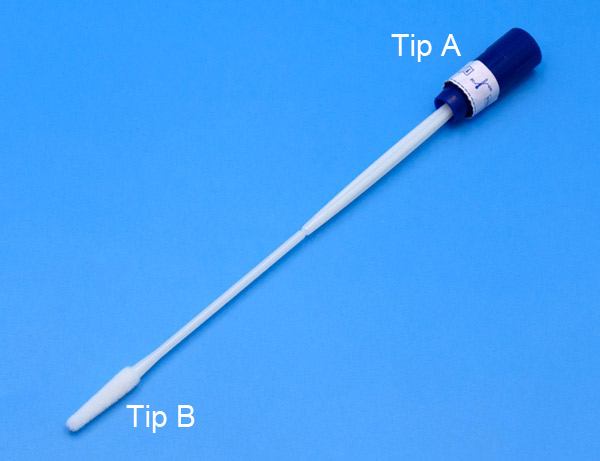子宮頸部の健康は女性にとって最も重要です, 定期的なスクリーニングが重要な役割を果たします. ある場合には, 子宮頸がん検査のために自分の膣サンプルを採取できる場合があります. プロセスを進めるのに役立つ詳細なガイドは次のとおりです.
始める前に
医療提供者は、サンプル収集プロセス中にあなたのプライバシーを確保します。. プライベートな空間をご提供いたします, スクリーンの後ろやバスルームなど. その後、以下が含まれるサンプル コレクション パッケージを受け取ります。
膣サンプリング綿棒.
パッケージを開ける前に, 綿棒の両端を識別することが重要です. 一端 (ヒントA) それはあなたが持つためのものです, そしてもう一方の端 (ヒントB) サンプルを採取するためのものです. よくわからない場合は, 遠慮せずに医療提供者に尋ねてください. 手が清潔で乾燥していることを確認してください. 快適な姿勢をとり、下着を下げます.
綿棒の準備
キャップを慎重にひねり、綿棒をパッケージから取り出します. チップBは体内に挿入してサンプルを採取するため、触らないように十分注意してください。. 綿棒を取り除いたら, 汚染を避けるため、どこにも置かないでください.
スワブの挿入
片方の手で膣の入り口の皮膚のひだをそっと動かします。. それで, 綿棒の先端 B を膣に数センチメートル慎重に挿入します. 一部のスワブには、適切な挿入深さを示す線やマークが付いている場合があります。.
サンプルの採取
スワブを任意の方向にゆっくりと回転させます。 10 – 30 秒. このプロセス中に少し不快感を感じる場合があります, しかし、痛みを引き起こすものであってはなりません.
サンプルの保存
チップAを持ったまま, ゆっくりと優しく膣から綿棒を取り外します. 先端Bを先に入れて綿棒をパッケージに戻します. キャップを締め直します. その後, 着替えてパッケージを医療提供者に返却してください.
サンプルの送信
収集したサンプルは HPV 検査のために病理学研究室に送られます. 検査結果はかかりつけの医療提供者に通知されます.
検体からHPVが検出された場合, もう一度医療機関を受診する必要があります. 子宮頸部からサンプルを採取する場合があります, または、さらなる検査のために専門家に紹介される場合があります.
このガイドは情報提供のみを目的としていることに注意してください。. 自分自身との違いもあるかもしれない – ここで説明されている採取綿棒と、医療提供者または研究室が使用している綿棒. 自分自身について質問がある場合 – 収集プロセス, 常に医療提供者に相談してください. 以下の手順に注意深く従うことで、, 潜在的な子宮頸部の問題の早期発見と予防に貢献できます.

















